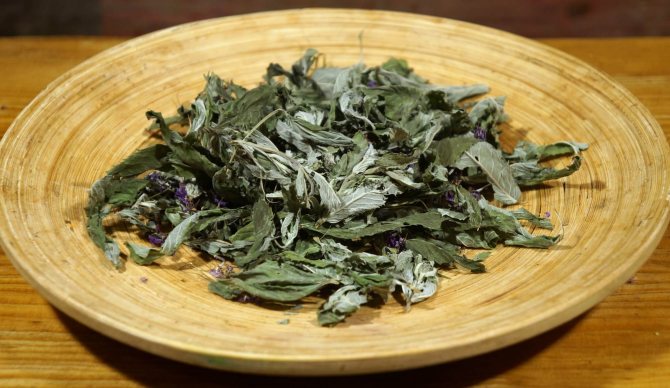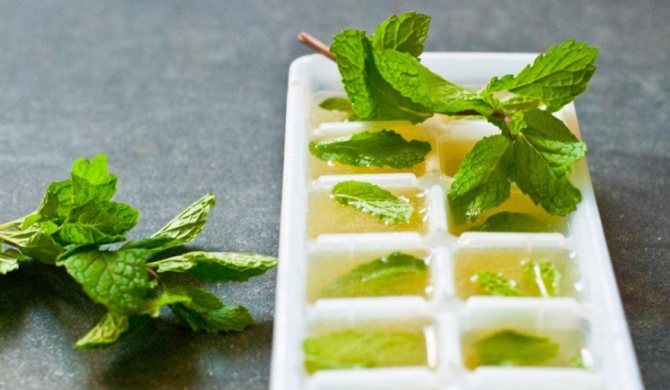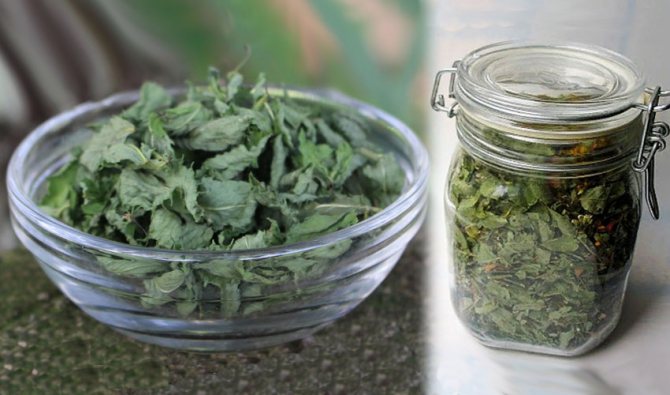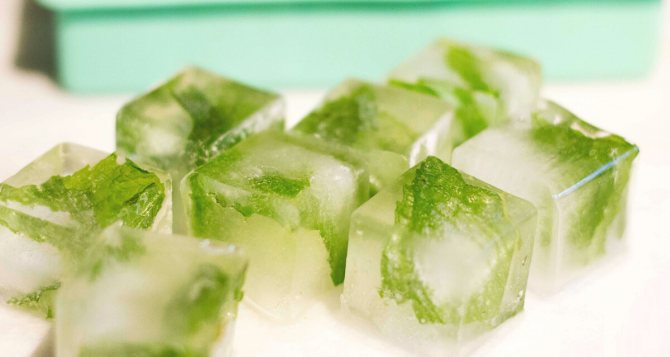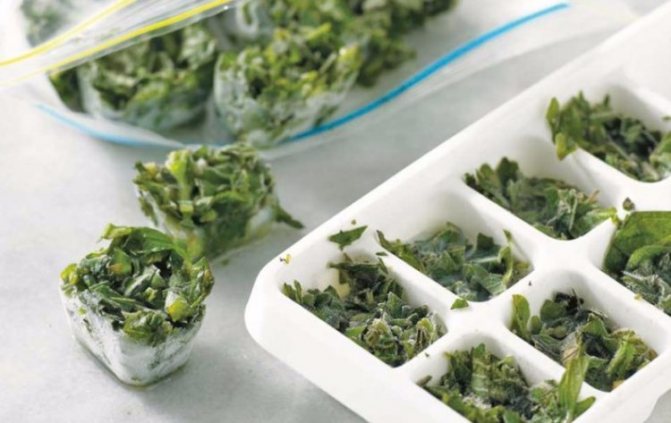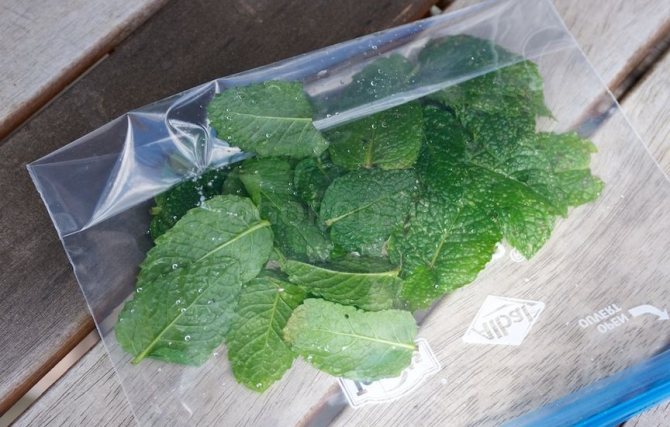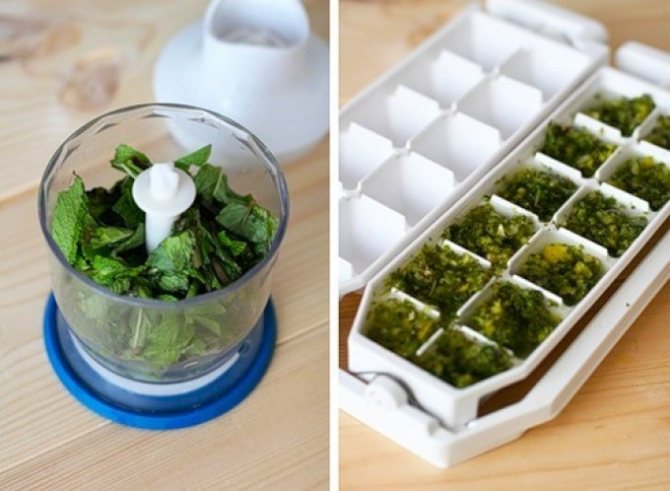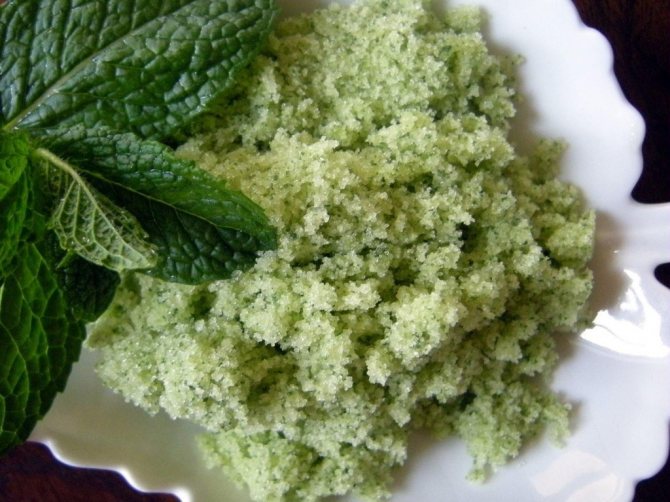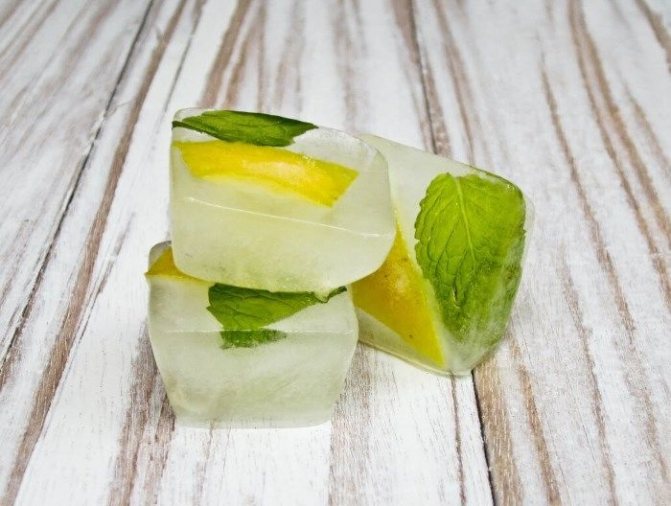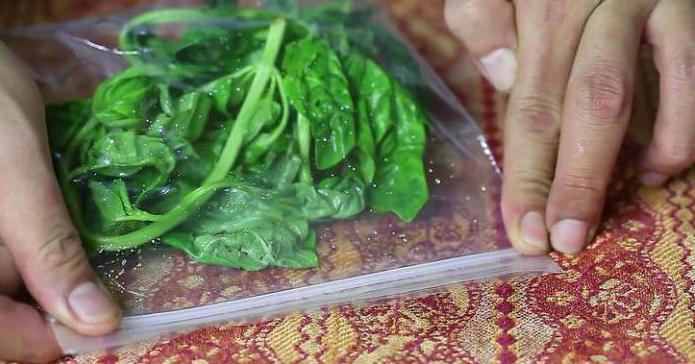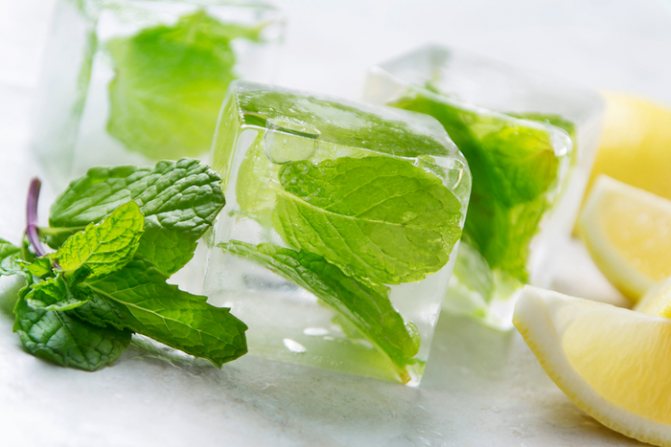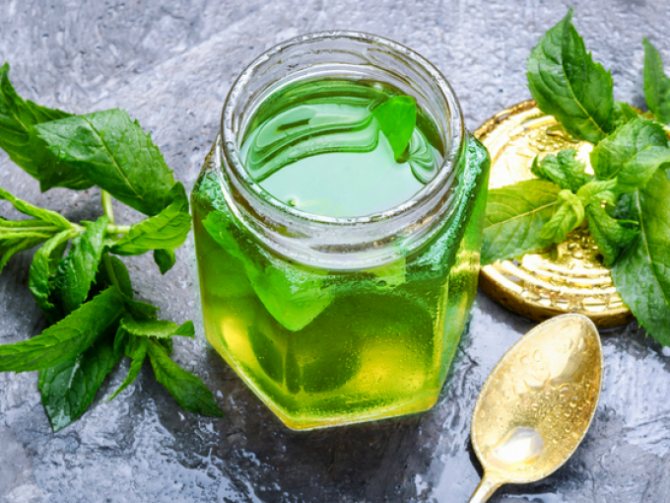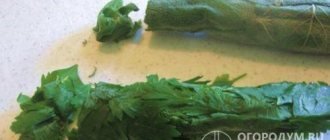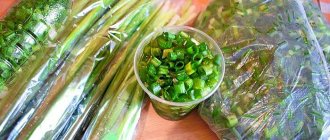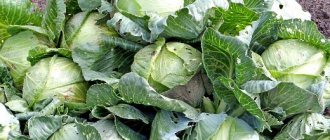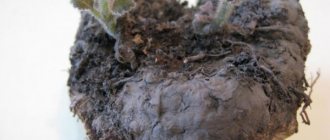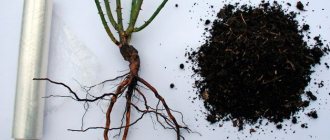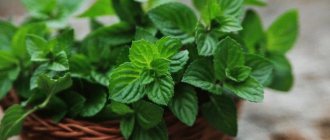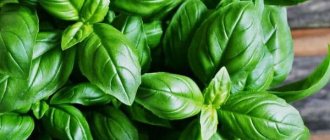How to store it correctly
Preserving all of the plant's medicinal properties depends on whether you know when to harvest mint to dry for the winter and how to store it. You will need:
- package;
- towel;
- container (boxes can be);
- a jar that closes tightly;
- linen bag.
How mint is stored depends a lot on how quickly you are going to use it. For example, if you collect it for tea for the evening, then you need to wrap it in a damp towel, this is enough to preserve its properties. If the shelf life is 3-4 days, then you need to fold the sheets in a damp towel, put in the refrigerator. Can be placed in a container and covered with a wet waffle cloth. This method will save the properties of the plant for 4 days. Here are some more options for storing mint:
- If you collect mint for long-term storage, it is best to freeze it. Do not remove the stems, just fold the raw materials in a plastic bag and put them in the freezer. Further, you can make cocktails from it, add to tea.
- In most cases, mint is harvested for drying. Collect it in bunches, hang them in a shaded place, without access to sunlight. Then inflorescences, stems can be separated from the sheets, rubbed and stored in fabric bags, jars with tight lids. This mint can be added to stir-fry, soup.
- If you don't feel like harvesting and drying mint, you can grow it right at home. This unpretentious plant can grow right in the apartment. Tear off the stem and place it in the water, when it has white roots, transplant the mint into the ground. The grass grows very quickly, and when you pluck the leaves, it bushes even more.
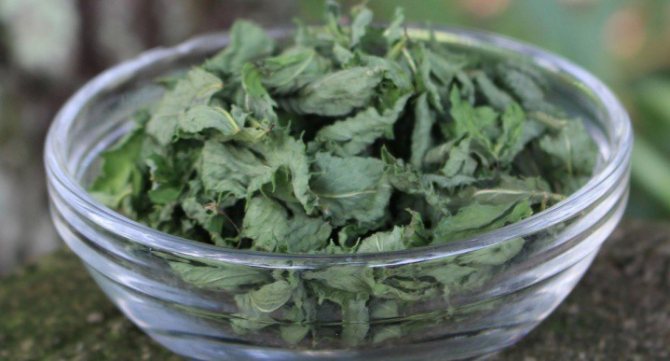
Drying the grass
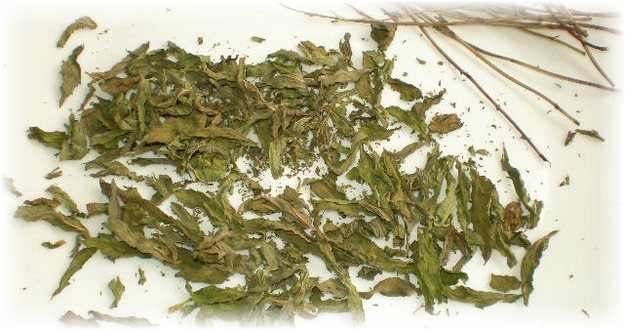

How to dry mint properly? There are several opinions on this. Someone gives preference to devices that speed up the process. Nevertheless, natural drying can preserve the maximum of its benefits and taste in mint, so you should resort to using an electric dryer and an oven only if the weather does not allow you to dry the product in a different way.
First of all, the harvested crop must be thoroughly rinsed in running water and dried for some time by spreading it out on a napkin or towel to absorb moisture. After the mint has dried, you can continue.
Plants with stems must be collected in free bunches so that air can circulate between them, fasten them with a rope and hang them in a well-ventilated room.
Advice! If you need to dry the grass, in no case should it be exposed to the sun. It is necessary to dry any greens in the shade, this is the only way to get the best result. A sun-dried plant loses its benefits.
Mint leaves that have been left without a stem must be laid out on trays, having previously covered them with white paper. Do not use newspapers for these purposes, they will add harmful substances to the mint. The grass should be dried in the shade with good air circulation. Be sure to stir the mint periodically so that it dries evenly.
It is important not only to hide the product from the sun, but also to hide it from a large amount of dust. You should also monitor the humidity in the room.
Excessive moisture can contribute to rotting greens. The best temperature for getting dried mint is 20-30 degrees.This is another reason not to use the oven for drying, it is difficult to create such a temperature artificially.
It takes about seven days to dry the mint, depending on the room in which the process takes place. You can check the product for readiness as follows: you need to try to grind a piece of mint in your hands. If the herb quietly turns into powder, then you can put the mint for storage.
Dried mint storage rules
Mint with sugar for the winter is often harvested by zealous housewives. This is the best way to add it to tea.
If you just dry it, then at room temperature this must be done for several days. To determine the readiness of a plant, simply press down on its leaf. When it easily separates from the stem and crumbles in your hands, drying can be safely completed. After that, grind the raw materials and pack for long-term storage.
It is important to store the mint properly after drying. Of course, chopped greens take up little space, but at the same time they lose their color and aroma more intensively.
Therefore, it is best not to grind it into powder ahead of time. And if it comes to grinding, then do not use a coffee grinder. Use gentle manual methods instead.
Glass jars are best for storage. They must be dry with a tight-fitting lid. So neither moisture nor pests will penetrate inside. In a dry place, herbs will retain their aroma for up to six months.
Rules for collecting mint for winter harvesting
To prepare mint, you should adhere to the basic rules of collection:
- It is better to cut the plant, not tear it. Both whole bushes and individual leaves are suitable for collection. The hard base of the stem is not suitable for storage and use, so when harvesting a whole plant, cut off 2/3 of its crown. In addition, a plant cut in this way can regrow overgrowth by autumn.
- Go for grass in June and July.
- It is undesirable to harvest crops on a rainy or foggy day. Moisture accumulating on the bush in large or barely noticeable drops of dew makes the leaves brown, and can cause mint to rot during storage.
Mint can be stored both dried and frozen
- You only need to harvest a whole blooming plant. Otherwise, you will not get the full range of healing properties. Mint inflorescences are pinkish or light lilac in color.
- Place cut samples in the shade while working. The sun will evaporate healthy essential oils from the greenery.
Advice. Of course, you shouldn't harvest mint near roads or livestock farms. Also, you must be sure that the area is not treated with chemicals or fertilizers. Otherwise, instead of a useful agent, you can get a harmful one.
For the harvested mint, you can arrange for a short-term storage in the refrigerator. Wrap the leaves or shoots in dry paper towels and place in a resealable container or plastic bag. This method will preserve the aroma and taste of the mint for about 1 month. Then parts of the plant will darken, soften and lose medicinal properties. There are other options for longer storage.
Features of the choice of ingredients
The collection of herbs takes place in July-August - this is the time of flowering. At this moment, foliage, shoots and flowers accumulate essential oils and other useful components. 2-3-year-old plants are considered to be of high quality. The collection is carried out early in the morning or after sunset. It is impossible to pull out the mint by the root, it is recommended to cut off 70% of the stem, the lower sprout may still grow.
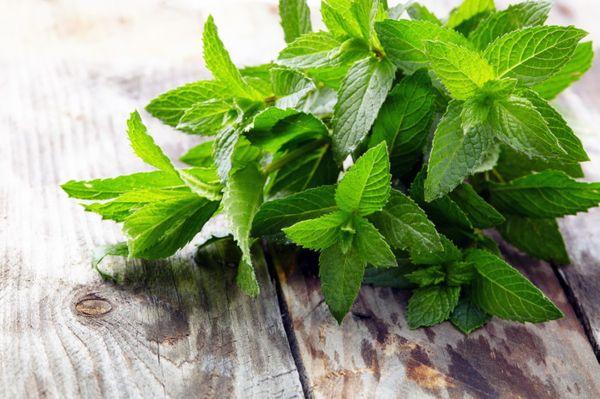

How to properly prepare mint for the winter
The best season for harvesting mint for the winter season is the months of July and August.It was during this period that most in most regions you can see the flowering of this plant, and in the foliage, namely in the tops of the shoots and the flowers themselves, essential oil accumulates, and in large quantities, and there are also many other substances that are active.
You will get the best raw materials in the evening, as well as in the morning when the dew is not on the plant.
Also from plants that are already 2.3 years old.
And also you can get it when the weather is cool and dry.
By the way, cutting should be carried out 1 third of the length of the stem, since the hard part of the stem is completely unsuitable for storing in winter, and until the end of the season you can see the new growth.
The greens that you have collected, you need to carefully sort it out and remove the dry parts of the plant and sweep it in. Parts of the plant may be damaged, remove them. Also be sure to dry it.
If you want to keep the mint fresh, not dried, then you need the greens that you prepared to put in a container with water, albeit in a small amount, and cover with a film on top or take a plastic transparent bag, and then transfer to the refrigerator.
Next, you need to wrap the mint shoots, as well as individual leaves from the stems in paper napkins, and then put them in bags or containers that can be closed.
If you are wondering how to keep mint in the refrigerator on a long-term basis, then use one of the oldest methods: Dry mint, which will retain valuable oils and aroma in this form.
Mint can be dried or frozen for the winter. It is necessary to collect it from June to July, at the very peak of its flowering. You can dry either whole stems or chopped leaves. A favorable time for harvesting is dry weather, after cutting, immediately remove from direct sunlight. Tie the stems into sparse bunches so that they dry out better and hang in a ventilated room, for example, on the terrace or in the attic, dry cut leaves or leaves entirely on paper in a shaded place, sometimes turn over.
Where is mint used?


It is a very widely used plant in various fields. You can find out how to keep mint fresh for the winter in our article.
For example, the plant is popular as a food product. Japanese and peppermint are used in cosmetics. And in herbal medicine - water and peppermint. Peppermint is also used in pharmacology.
Freezing mint for the winter
What we need:
- Bunches of mint in any amount;
- dense plastic bags;
- molds for ice or silicone molds for sweets;
- small jars with screw caps;
- chilled boiled water.
How to freeze mint with whole leaves
For freezing, you can use any variety of mint, I had several bunches of different varieties. Immediately after cutting or buying, fragrant greens should be placed in the water even if mint grew in a summer cottage or was cut from a garden bed. We collect cold water in a large bowl, lower the mint for a few minutes. Then we wash the shoots under running water, shake them off and lay them on a towel in one layer. You don't need to cover. After about half an hour, it will dry out. Stir the mint several times during drying, stir it, so the water will evaporate faster. Do not leave for a long time, sluggish mint is not suitable for freezing!
After it dries up, we proceed to sorting. We put the small leaves and tops of young twigs aside for now - we will deal with them a little later. We put large leaves without damage, spots and beautiful tops of shoots with two or three leaves in small jars or plastic containers. Bags for this purpose are not the best solution - when frozen, the leaves become brittle and break easily. If you need to keep them intact, then only freeze in a jar. We send the filled containers to the freezer.
Mint can be frozen with whole branches
Divide the bunch into small portions, put it in a tight bag, wrap it carefully, trying not to wrinkle or break the leaves. We put it in the freezer, be sure to sign the freeze
There are two ways to freeze mint for tea, infusions, broths: finely chop, like any greens, or leave the leaves intact. I like the second method more, mint leaves in a cup of tea look beautiful, as fresh, and the aroma is preserved. We cut off the tops of the shoots with several leaves, put them in bags. Roll up, not very tight, and freeze. Then, if necessary, the frozen leaves can be added either whole or cut.
Freezing mint in ice cubes
This method requires an ice container or silicone molds of the correct size. You can also use plastic liners from candy boxes as a container. We lay out small whole leaves and tender tops of the shoots in cells, 4-6 pieces are placed in each.
Fill with cold boiled water. We put in the freezer for several hours. We remove from the molds, put them in bags. With such a freeze, the leaves do not break and in drinks will look like they have just been plucked.
Mint syrup
One and a half cups of chopped mint greens from your own will require a glass of sugar and the same amount of water. Mint leaves are poured with half of the sugar and left for several hours so that the grass gives juice, and the sugar begins to dissolve. Syrup is made from the remaining sugar and water, checking its readiness after boiling, drop by drop on a saucer. If the drop doesn't flow, the sugar syrup is ready and you can pour the mint over it.
To preserve all the properties of the plant, the syrup should not be kept on fire for too long. Immediately after boiling, remove the pan, cool the syrup and rub it through a sieve and pour it into sterilized dry bottles or jars.
How to store mint syrup properly? Vitamin and very fragrant syrup can be stored well for up to two months if sealed jars are placed in a refrigerator or cellar.
How to freeze mint - video
Would you like to drink mint tea? We suggest you learn how to freeze mint for the winter with whole leaves in ice cubes. Mint frozen in this way will retain its shape. It's easy to do, we offer you detailed instructions. You can just as easily at home.
Ingredients: - pure water; - fresh mint.
Recipe with photo step by step:
Rinse fresh mint well, soak it in ice water. This will help the leaves straighten out. Leave the mint in the water for about five minutes. It is best to pick the mint yourself, early in the morning, when the sun has not yet risen high and the dew has not yet dried. If you buy mint from the store, make sure that the leaves are not dry and wilted. Such mint is suitable if only for drying, but not for freezing in ice cubes. Separate the mint leaves from the twigs and gently place a few leaves in each compartment in an ice cube tray, which can be of different sizes depending on your needs. Do not place damaged leaves in ice cube trays. Fill with water, leaving a couple of millimeters up to the rim and put in the freezer for three hours. Take water filtered so that there are no foreign impurities in it. When the ice is frozen, remove the cubes from the ice cube tray and put them in a ziplock bag. It is important that the frozen mint is kept in an airtight bag. Otherwise, the ice cubes will absorb all the indescribable aromas of the freezer. These cubes can be added to hot tea, compotes, fruit drinks and other drinks. They will cool the hot liquid and add a minty flavor. Well, plus a beautiful mint leaf will remind you of the summer season. In winter, when there is a high probability of catching colds, you can cook fruit drink from frozen raspberries and add a cube of frozen mint to each glass. If you cook, you can immediately add mint cubes to it, there will be two in one at once: ice and mint.In the same way, you can freeze lemon balm, parsley, chamomile. If you freeze chamomile, you can use it for your morning wash. The skin will tighten well, the rejuvenation process is obvious.
If you purchased or cut fragrant greens and did not use them, store them in the refrigerator. To prevent the mint from wilting, rinse the twigs with leaves thoroughly and shake slightly to remove excess water. Wrap in damp gauze or towel and refrigerate.
The washed greens can be placed in a plastic container and covered with a lid. If you don't have a suitable container, place the fragrant twigs in a disposable bag and tie tightly to keep out air. You can also put the herbs in a glass of water. Mint can be stored in the refrigerator for 4-5 days.
Fresh mint
Mint in a glass
How to store mint if the cut branches wilted without water within 2-3 hours? To extend this period as much as possible, do as with flowers - cut off the stems obliquely, tear off all the leaves that will stand in the water and put the "bouquet" in a glass, jar or low vase. Remember to add fresh water every day. This way you can keep it fresh for 3-4 days.
If no container is at hand, cover the plants with a damp cloth.
Another method is an airtight plastic container or plastic bag with a zipper that does not allow air to pass through. Fold absolutely dry leaves there, cover and put in a cool, dark place. Cover the transparent packaging with a thick cloth to protect it from direct sunlight. The shelf life is approximately the same.
From store-bought mint, immediately remove the plastic or cellophane wrapping and rinse the leaves thoroughly and leave to dry on paper towels or a clean cloth.
Description
Frozen mint will be one of the most useful preparations for the winter. Who has not heard about the beneficial properties of this plant today? Such greens are widely used to create various medicines and antibacterial drugs. Mint is one of the best sedatives, which is why mint tea is considered so beneficial. This natural product is unmatched and its scent is used to create a wide variety of perfumes and other flavors. Fresh mint is a valuable product that you just need to try to save for the winter.
In this step-by-step photo recipe, we will tell you how to easily, quickly and correctly freeze mint for the winter. In this way, we will not use heat treatment, as is often the case with herbs, in an effort to preserve the maximum useful properties of this plant. If necessary, after harvesting in winter, such mint can, for example, be dried and used as a spice, or a very fragrant natural tea can be brewed with it. Frozen mint can also be used to create delicious desserts and other dishes; only you can decide how to use such a blank later.
Properties and types of mint
Mint is one of the most widely used plants in folk and official medicine. The aroma of mint, cold, fresh and spicy, is its calling card, by which the plant can be unmistakably distinguished by both an adult and a child. The plant is used:
- In medicine;
- Cooking;
- Cosmetology;
- Perfumery;
- Chemical industry;
- Alcohol production;
- Sometimes in veterinary medicine.
Mint - beneficial properties and uses:
- Meadow;
- Swamp;
- Japanese;
- Wild;
- Lemon;
- Apple;
- Water.
Did you know how many varieties of MINT?
How to store mint in winter
Mint, like many other herbs, is often dried in modern electric dryers. Only in these cases should you remember about the peculiarities of the spicy herb.
In order to preserve the maximum amount of essential oils in the mint, it should not be exposed to high temperatures in its raw form. For drying herbs, the temperature should be 25-30 degrees. No more.Therefore, set the most gentle mode in the electric dryer. Drying mint in the oven for the winter is not recommended at all.
If you dry it out, it will quickly lose moisture, because this process is very intense. So even in an electric dryer at the most gentle mode, mint can be overexposed. Don't let this happen - keep track of the time. Because of this, it can become too fragile, and the leaves will lose most of their beneficial properties.
When you hang bunches of mint around the apartment and feel that humidity rises in the house, you need to take them to another place as soon as possible. Otherwise, mold will appear on the leaves. This will make the mint unusable.
When dry, mint is easily recognizable by its characteristic color. It turns brown. In this form, the herb is odorless and useless for health.
Which mint is suitable for freezing?
The first and foremost requirement for mint sprigs intended for freezing is that they must be fresh. Not even that - super fresh. Greens that were plucked a long time ago and already had time to wilt should be dried.
It is also important that:
- there were no traces of diseases on the leaves and stems (white or gray bloom, rust, black dots);
- the plant was not too young (it contains a minimum of aromatic substances) or old (the leaves of the faded mint coarsen and the content of essential oils decreases) - if possible, this herb should be harvested at the beginning of flowering;
- the collection took place in warm sunny weather.
It is categorically impossible to freeze (and indeed eat) mint collected on the sides of roads, near industrial enterprises and in other places that are unfavorable from the point of view of ecology.
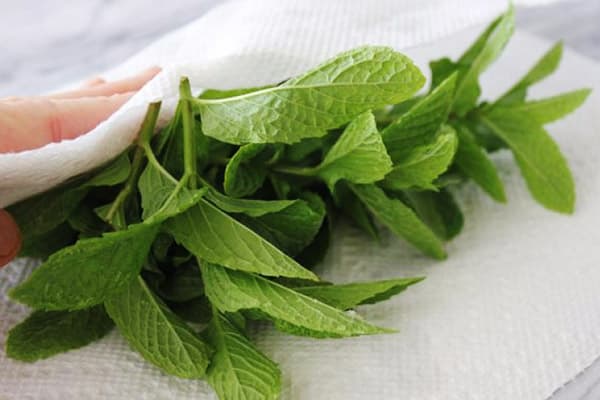

Frozen mint
Frozen mint can be stored throughout the winter without any problems. It makes the same tasty and healthy teas, decoctions, desserts.
The plants are washed, dried, the leaves are torn off, put in a plastic bag, released air, tied tightly and put into the freezer. No need to fill the bag tightly. After a few hours, if it takes up a lot of space, the leaves can be laid more tightly. But the operation must be carried out quickly so that they do not have time to thaw.
If there is a quick freeze mode, place the mint leaves on a tray and turn it on for 7-10 minutes. Then fill in sachets and put away for permanent storage.
Ice molds take up less space. The mint is finely chopped, put in them, poured with water and sent to the freezer. Then you will get very beautiful and original cocktails. This method of preparation for the winter is suitable if you plan to make teas or decoctions.
Shredded leaves
Perennials pre-chopped with a blender are added to main courses or desserts. Small candy molds are suitable for this purpose. Wash the greens, separate the leaves from the stems and leave in a colander for 15 minutes.
Then place the treated plant in a measuring cup or deep container. To grind the perennial better, you can add a little water. The result should be a gruel. It is laid out in molds and left in the freezer until it hardens completely. The resulting workpiece is transferred to a bag and stored for up to a year.
Features of storing fresh mint
Mint can be harvested at the end of June. At this time, its leaves were sufficiently filled with useful substances and solar energy.
Freshly cut mint will wither quickly. Therefore, in order to preserve it even for a short period, you cannot do without a refrigerator. There are several methods you can use to keep the mint from withering for a few days.
- Place the plant in a food container. Wet a waffle towel and place on top. Place container in refrigerator. Do not cover with a lid. Once a day, remove those leaves that have begun to deteriorate. For five days, the mint will remain fresh.
- Wrap the stems in a damp towel.Find enough space on the shelf in the refrigerator so that nothing interferes with the plant. Mint will not fade within 5 days, no more.
- Pack the leaves in a new plastic bag, squeeze out the air as much as possible and close. The plant will remain fresh for 3-4 days.
If the mint will be used in an hour or two, then it is enough to cover it with a damp towel and leave it on the kitchen table.
The plant can also be placed in a vase or other container of water.
Preparation for winter storage
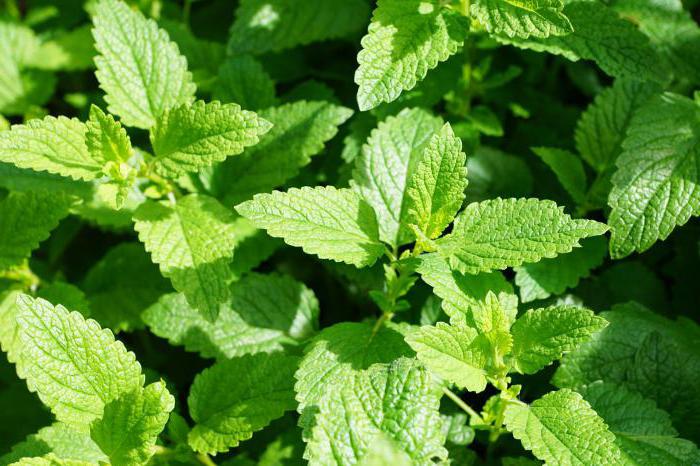

Before sending the greens to the refrigerator, they must be dried. The mint is carefully sorted out. It is imperative to get rid of damaged or dry parts of the plant. And then rinse and dry.
There is a secret on how to keep mint leaves fresh for the winter. To do this, collect the herbs you have processed in bunches. Place in containers with a minimum amount of water, and cover with foil on top. You can also use a clear plastic bag. Then send the containers to the refrigerator.
Mint shoots, as well as leaves separated from the stems, are wrapped in paper napkins. They are placed in containers or tight-fitting bags. Only in this form will mint retain its freshness, its beneficial properties and its original appearance for about a month. But then nature will take its toll. Color and elasticity will be lost, and nutrients will begin to evaporate every day.
How to keep mint fresh for the winter for longer? There are several ways to do this.
Dried mint
Most often, to preserve the mint for the winter, it is dried. To preserve the maximum nutrients and aroma, cut the plants in late July or early August. Choose a dry day - mint, picked immediately after or during the rain, after drying will acquire not a pleasant greenish, but an ugly brown color.
Of course, you should not pick plants on the sides of highways, next to livestock farms and farms that abundantly use chemical fertilizers.
You can dry both whole stems and individual leaves. The first ones are tied in several pieces with a thick thread, the second ones are laid out on trays, clean paper or cloth. You can leave them outdoors in a well-ventilated place, protected from direct sunlight. You can dry it at home, but also in a natural way. Mint dried in an oven or electric dryer almost completely loses its aroma.
Drying, depending on the weather, will take 10-14 days. The finished leaves are easy to grind into crumbs.
"Brooms" are stored in the same form in clean cloth bags. Sometimes they are finely broken and poured into glass or tin containers with tight-fitting lids. Ceramics, porcelain, wood and plastic are not recommended as containers, as they can absorb essential oils. The same is done with dried leaves, crushed into powder and whole.
It is best to store dried mint in a dry place at room temperature, away from direct sunlight and sources of heat.
P.S. There are many recipes for mint jam. But not all of them turn out to be beautiful, amber in color or can be stored for a long time. Watch the video, which reveals the secrets of making this wonderful dessert.
We also advise you to read:
- Organizing the storage of pot lids (5.00 out of 5)
- Cooler bag: DIY (5.00 out of 5)
- How to keep the health benefits of aloe juice at home (5.00 out of 5)
- How to keep chrysanthemum bushes in winter (5.00 out of 5)
- How to keep bell peppers fresh in winter (5.00 out of 5)
Attention, action!
Brownie gives 5o% discount on sturdy Berlinger Haus knives!
03 Jul 2020 edypravilno 122
Which plants are suitable for drying?
In order for the mint you collect to be not just a dry, useless herb, but a real repository of the best culinary and medicinal properties, it is worth observing several important rules when collecting it:
1. You should not collect plants near roads and industrial enterprises, if, in addition to aroma and pleasant taste, you do not want to get "into the load" impurities of any substances harmful to health.
2. Young mint is not suitable for harvesting, since it does not retain aroma and medicinal properties, and also dries out significantly during the drying process.
3.If you want to dry the leaves with stems, you must wait until the plants are in full bloom. Only the leaves can be harvested before flowering, but after the inflorescences have set. The highest content of essential oil is in a mature plant. During the flowering period, mint becomes the most aromatic.
4. Cut mint down to one third of the length of the main stem. In this case, the plant will be able to regrow, and you will receive another additional crop during the season or even two.
5. It is important to start harvesting in dry weather, as well as after the dew has disappeared, otherwise the mint will not remain green and may turn brown after drying.
6. For drying, it is necessary to take only high-quality material: discard damaged and diseased plants immediately.
When to harvest mint
This plant is collected for storage only two months a year - from June to July. It is worth cutting at a time when the plant has already fully blossomed, otherwise its aromatic properties will not fully manifest. However, if buds have appeared on young shoots of mint, then individual leaves can be collected from them. Both the whole stems and only the leaves are dried.
The humidity of the air at the time of collection is of great importance, therefore the best time to harvest mint, as well as other medicinal herbs, is dry weather. If you pick mint on a day when there is dew on the leaves even in the late morning, then after drying it will turn not green, but brown. Also, cut mint stems must be immediately removed from direct sunlight.
Of course, it is worthwhile to be wary of harvesting medicinal plants in abundantly fertilized areas, as well as on land located in the immediate vicinity of roads and livestock farms.
Useful Tips
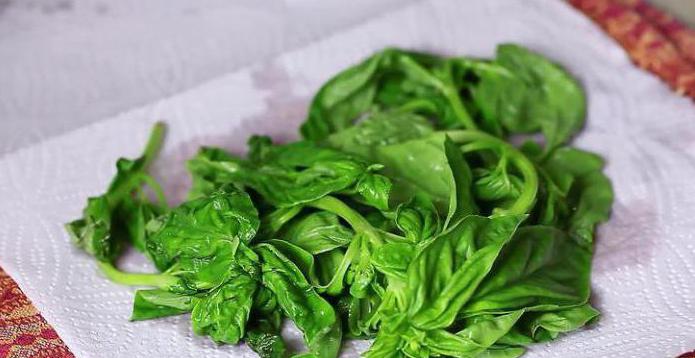

Harvesting mint for the winter needs to start with its collection, and then proceed to processing.
The best raw materials for long-term storage can be obtained from two- or three-year-old plants. It is best to harvest in the evenings or in the morning when there is no dew on the plants. Also, the weather should be cool and dry. Mint is best harvested by cutting off about a third of the stem. The fact is that its hard part is not suitable for storage for the winter. Moreover, if left until the end of the season, it can give fresh growth.
When to pick mint for the winter? It is best to start harvesting it in the middle of summer - July or August. In most Russian regions, by this time, mint begins to bloom. It is easy to determine this by lilac-pale or pinkish inflorescences. By this period, a large amount of essential oil accumulates, which is concentrated in the tops of the shoots, flowers and foliage. There are also many other active substances. It is for them that this culture is so appreciated.
How to dry mint for the winter at home
- Bunches of mint;
- kitchen towel or cotton cloth;
- glass jars with lids.
How to dry mint in the fresh air
After cutting, the essential oils from the spicy greens quickly evaporate; harvesting should be done immediately, while the mint is fresh and aromatic. Place the bundles in a container with cold water for two to three minutes. Shake off water droplets, transfer to a colander. Cover and shake vigorously to drain the water faster.
It is better to dry mint for tea, tinctures, broths with whole leaves, so they retain their aroma longer. Tear off the leaves from the branches, the apical shoots (a rosette of two or three leaves) can be left intact. Throw away the yellowed, dark, damaged without regret, there is nothing useful in them anymore.
To dry mint, you need to choose a place where there is no direct sunlight and it is better to use natural cotton fabrics or linen fabric. Cover the table or boards, baking trays, sprinkle mint leaves in a thin layer - this way it dries faster and does not rot. Do not cover with anything until all the water has evaporated. After a few hours, the mint will air out, wither and you can cover it with paper or a thin cloth.
Important! Drying mint in the sun or at high temperatures is not allowed! Under the hot rays of the sun, it will lose all its healing properties, the leaves will curl, become fragile, the aroma will practically disappear. You need to dry mint at home at a temperature not exceeding +30 degrees
After a few days, the mint will dry out. Time depends on weather conditions, temperature and humidity. When it is dry and hot, the greens dry in about three days; in cool rainy weather, it will take about a week. During drying, you need to stir, stir up the dried leaves. Rub the leaf with your fingers to determine the degree of dryness. Mint is considered dry, ready for storage, if the leaf breaks easily, crumbles. If only crumpled, then you need to dry it still.
When to harvest mint to dry for the winter
The most common question is when to harvest and dry mint: before flowering or after? The best time is considered the period when enough green mass grows - there are many leaves of different sizes on the stems, and flower buds already appear at the top. During this period, the plant contains the greatest amount of essential oils and nutrients, the aroma is very strong.
Collecting mint is done in different ways. Only the leaves are plucked, without branches, or the shoots are cut off by about a third of the stem length, so that the plant has the strength to release new shoots. Then in a few weeks it will be possible to make another cut.
Cutting should be done in dry weather, in the morning, while the sun is not very bright and strong. In the heat and in the middle of the day, mint is not so fragrant, it loses its freshness and elasticity.
How to store dried mint
The best containers for storing herbs are glass jars with tight-fitting lids. Pour dried herbs into clean dry jars, tamp. Tighten with lids, put in a dark, dry place. It will be possible to grind into powder or crumble smaller before use, whole leaves better retain nutrients and remain aromatic longer.
In addition to cans, linen or cotton bags are suitable. Dried mint is poured into them, tied tightly and hung in a dry, shaded place.
Cardboard boxes and paper bags are not good - they will quickly absorb aromatic oils, and mint will become practically useless.
Subject to the necessary conditions, the shelf life of dried mint is up to two years.
How to use dried mint
Whole and crushed dry mint leaves are added to herbal teas, black and green tea, vitamin and medicinal preparations, brewed with dried and fresh berries, flavoring compotes.
Dried mint can be used as a seasoning in the preparation of first and second courses, added to broths, vegetable and fruit salads, various sauces, pastries, desserts. Dried mint has a very strong aroma and rich taste, so it is added to any dishes in a small amount, less than fresh, so as not to overdo it.
We hope that the recipe and recommendations for when to collect and how to dry mint will be useful, and you will properly prepare healthy greens for future use. And also see the recipe for how to freeze mint, in freezing it also retains all its properties.
If you liked the recipe - share the recipe on social networks
- Homemade ketchup with apples
- Pickled cherry tomatoes for the winter
- Eggplant in adjika for the winter
- Cucumber salad "Nezhinsky" for the winter
- "Hunter" salad for the winter
- Dressing for borscht for the winter with cabbage
20 Jun 2020 edypravilno 201
Freezing methods
Depending on how and for what the mint will be used in the future, there are several ways to harvest it for the winter.
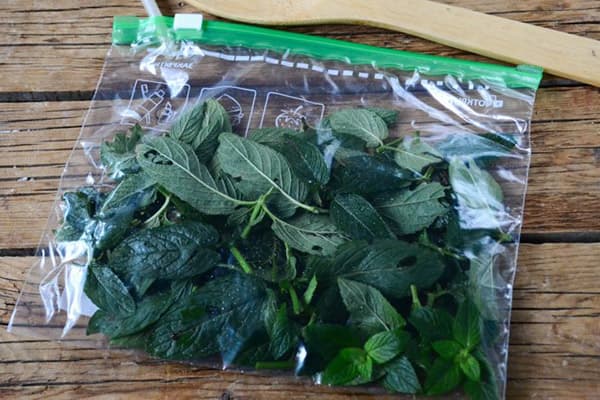

In vacuum bags
Ideally, aromatic herbs should be frozen in this way, because when they stay at low temperatures for a long time, the plants "dry out" - moisture evaporates from their tissues, and with it essential oils, which provide a pleasant smell. If the greens are in a bag from which the air has been removed, the moisture simply has nowhere to go. This means that even after 5–6 months, mint will fully retain its taste and look fresh.
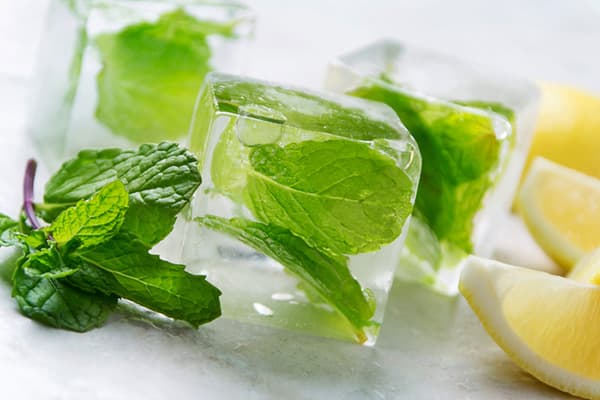

In ice cube trays
This preparation is perfect for cocktails, iced tea. If it is planned that the mint should convey its aromatic and taste notes to the drink, the leaves should be finely chopped, immediately put into molds, filled with drinking water (pure or with the addition of lemon juice) and sent to the freezer. The faster this task is completed, the more essential oils will be retained in the greenery.
In the case when the mint inside the ice cubes is a decoration, it is better to use whole leaves. The tops of the stems look the most beautiful.
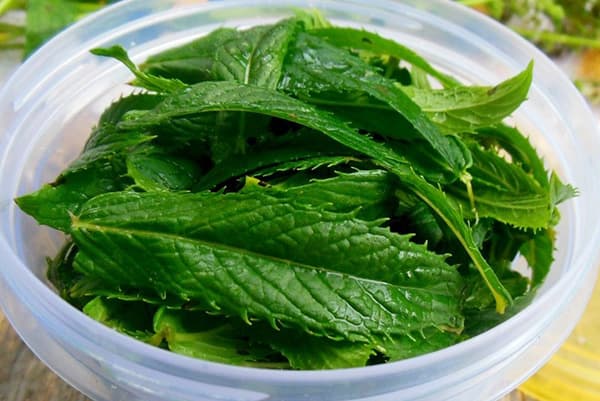

In plastic containers
If you don't have a vacuum dispenser or ice cube trays, you can freeze the mint in a regular plastic container. It is important to make sure that the operating temperature range is indicated on it: a container that is not intended for use at temperatures below zero degrees can emit harmful substances or simply become unusable.
Freezing in a container will prove to be a winning option in the following cases:
- The need to use mint arises often, while a small amount of it is consumed (it makes no sense to open the vacuum bag, and it takes two seconds to open and close the container).
- The estimated shelf life is less than two to three weeks (during this time, the grass will still not have time to lose its aroma and dry out).
A prerequisite for this method is the presence of a sealed cover.
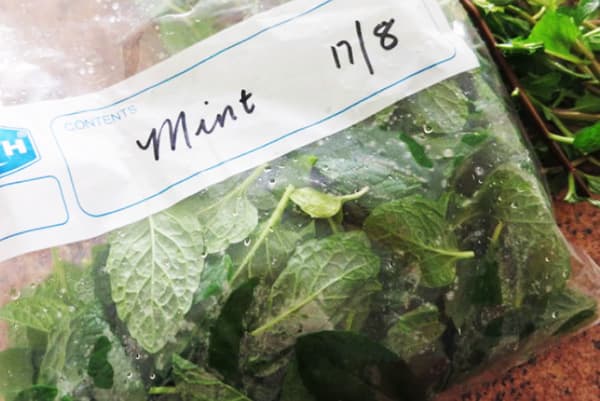

How to use dried mint
Traditional healers value mint and consider it a medicinal plant for its high content of essential oils and tannins.
For example, mint tea helps with heartburn, nausea and flatulence - pour one tablespoon of well-dried mint with one glass of hot water and let it brew for 10 minutes. The same tea with the addition of honey relieves the symptoms of angina pectoris. A child who suffers from skin rashes, it is useful to bathe in the bathroom with the addition of mint broth.
Mint also has some contraindications. So, representatives of the stronger sex, addicted to mint tea, endanger their masculine strength. Mint infusion, in turn, is not recommended for use by hypotonic patients.
Each housewife takes care of keeping as many spices and preparations as possible to pamper the household in the winter. Among such products is mint. The collection of this plant occurs in the summer, however, with proper processing, it retains its freshness throughout the winter. As a rule, drying is chosen for this, because this method is simple and quick, and the harvested herb retains its aroma for several years.

